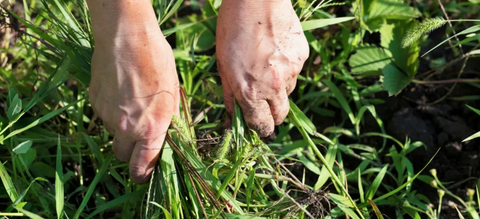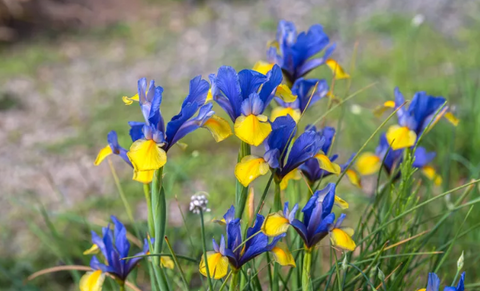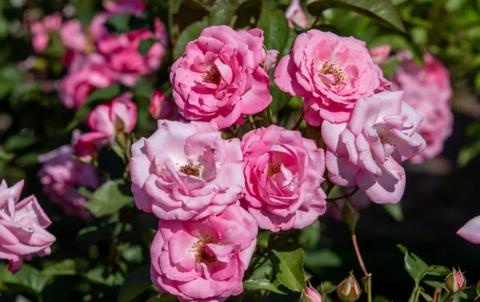Introduction
Raised beds offer a fantastic solution for gardeners dealing with limited space. They not only maximize yield but also improve soil conditions, making them ideal for growing a variety of crops, including potatoes. By utilizing raised beds, gardeners can maximize yield and optimize growing conditions. In this guide, we'll explore the ins and outs of growing potatoes in raised beds, from selecting the right varieties to harvesting and troubleshooting common issues. The following content also has some reference value for raised garden beds.

Selecting the Right Potato Varieties
Determinate vs. Indeterminate Growth Habits
Determinate potato varieties that are compact and well-suited for raised beds, as they don't require as much space to grow compared to indeterminate varieties. These varieties typically produce a set number of tubers per plant and have a shorter growing season, making them ideal for raised bed gardening.
Early, Mid, and Late Season Varieties
Choosing potato varieties with staggered maturity times allows for continuous harvesting throughout the growing season. Early season varieties mature quickly, while mid and late-season varieties provide a longer harvest window. Selecting a mix of early, mid, and late-season varieties ensures a steady supply of fresh potatoes from your raised beds.
Disease Resistance and Yield Potential
Opt for potato varieties that are resistant to common diseases such as late blight and potato scabs to minimize the risk of crop loss. Additionally, consider the yield potential of different varieties, selecting those known for high yields and quality tubers.
Preparing Raised Beds for Potato Planting
Location Selection and Sunlight Requirements
Choose a sunny location for your raised beds, as potatoes require at least six hours of sunlight per day to thrive. Avoid areas prone to waterlogging, as excess moisture can lead to rot and disease.
Building or Preparing Raised Bed Structures
Construct raised beds using durable materials such as cedar or pressure-treated lumber, ensuring they are at least 8-12 inches deep to accommodate potato roots. Alternatively, repurpose existing containers or build DIY raised beds using salvaged materials.
Soil Preparation and Fertilization
Prepare the soil in your raised beds by loosening it with a garden fork and incorporating compost or well-rotted manure to improve fertility and drainage. Test the soil pH and adjust as needed, aiming for a slightly acidic range of 5.8 to 6.5. Supplement with a balanced fertilizer to provide essential nutrients for potato growth.
Planting Techniques for Raised Bed Potatoes
Preparing Seed Potatoes: Chitting and Cutting
Prior to planting, chit seed potatoes by placing them in a cool, well-lit area to encourage sprouting. Cut larger seed potatoes into pieces containing at least one eye each, allowing them to dry before planting to reduce the risk of rot.
Spacing and Depth Guidelines
Plant seed potatoes in raised beds spaced 8-12 inches apart, with rows spaced 2-3 feet apart to allow for adequate airflow and tuber development. Plant potatoes 4-6 inches deep, covering them with soil and compost.
Hilling Method for Increased Yield
As potato plants grow, gradually mound soil around the base of the plants to encourage tuber formation and protect developing potatoes from sunlight, which can cause greening and bitterness. Hilling also helps improve soil structure and prevents weeds from taking root.

Caring for Potato Plants in Raised Beds
Proper Watering Practices
Keep the soil consistently moist but not waterlogged, as potatoes require regular watering to support growth and tuber development. Water deeply, ensuring moisture reaches the root zone, especially during hot, dry periods.
Fertilizing Schedule and Soil Nutrient Management
Apply a balanced fertilizer or compost tea every 2-3 weeks to provide essential nutrients for potato plants. Monitor soil nutrient levels and pH regularly, amending as needed to maintain optimal growing conditions.
Weed Control Strategies
Mulch raised beds with straw or organic mulch to suppress weed growth and conserve soil moisture. Hand weed regularly to remove any weeds that emerge, being careful not to disturb potato plants or tubers.
Managing Pests and Diseases
Common Pests Affecting Potato Plants
Watch for signs of common potato pests such as potato beetles, aphids, and wireworms, which can damage foliage and reduce yield. Monitor plants regularly and use natural pest control methods such as neem oil or insecticidal soap to manage infestations.
Preventing and Treating Potato Diseases
Protect potato plants from diseases such as early blight and late blight by practicing good sanitation, rotating crops, and selecting disease-resistant varieties. Treat infected plants promptly with organic fungicides to prevent disease spread.
Natural Pest Control Methods
Encourage beneficial insects such as ladybugs and lacewings by planting companion flowers like marigolds and calendula. Introduce predatory insects or use biological controls such as Bacillus thuringiensis (Bt) to manage pest populations naturally.
Harvesting and Storing Potatoes
Signs of Potato Maturity
Harvest potatoes when plants begin to flower and the foliage turns yellow and begins to die back, typically 10-14 weeks after planting. Gently dig around the base of plants to check for mature tubers.
Harvesting Techniques
Carefully dig potatoes from the soil using a garden fork or trowel, being careful not to damage tubers. Shake off excess soil and allow potatoes to dry in a cool, shaded area for a few hours before storing.
Curing and Storing Potatoes for Longevity
Cure freshly harvested potatoes by storing them in a cool, dark place with good ventilation for 1-2 weeks. Once cured, transfer potatoes to a cool, dry storage area such as a root cellar or pantry, where they can be stored for several months.
Troubleshooting Common Issues
Dealing with Yellowing Foliage
Yellowing foliage may indicate nutrient deficiencies, pest infestations, or diseases such as early blight. Address nutrient deficiencies by fertilizing with a balanced fertilizer and ensuring proper soil pH. Monitor plants for signs of pests and diseases, treating them promptly with organic remedies to prevent further damage.
Addressing Pest Infestations
If you notice signs of pest infestations such as chewed leaves or holes in potato foliage, take immediate action to control the pests. Use natural pest control methods like introducing beneficial insects or applying insecticidal soap to affected plants. Regularly inspect plants for signs of pests and intervene as needed to prevent infestations from spreading.
Managing Potato Diseases
Potato diseases like late blight and potato scab can affect yield and overall plant health. Practice good garden hygiene by removing and disposing of infected plant material to prevent disease spread. Choose disease-resistant potato varieties and rotate crops annually to minimize the risk of disease buildup in the soil. Treat affected plants with organic fungicides to halt disease progression and protect neighboring plants.
Maximizing Yield and Sustainability
Companion Planting Strategies
Planting potatoes alongside compatible companion plants can help deter pests, improve soil health, and maximize yield. Consider companion plants such as beans, peas, and marigolds, which can repel pests like aphids and attract beneficial insects like bees and ladybugs.
Crop Rotation for Soil Health
Rotate potato crops annually to prevent soil depletion and reduce the risk of disease and pest buildup. Rotate potatoes with crops from different plant families to minimize nutrient imbalances and maintain soil fertility. Incorporate nitrogen-fixing cover crops like clover or vetch during fallow periods to replenish soil nutrients naturally.
Utilizing Raised Beds for Intensive Gardening
Raised beds offer the opportunity for intensive gardening practices, allowing gardeners to maximize space and productivity. Interplanting compatible crops within raised beds can help optimize growing conditions and increase overall yield. Utilize vertical space by growing climbing crops like beans or cucumbers on trellises or stakes, further maximizing garden space and productivity.

Conclusion
Growing potatoes in raised beds is a practical and rewarding endeavor for gardeners looking to make the most of limited garden space. Gardeners can enjoy a bountiful harvest of fresh, flavorful potatoes by selecting the right potato varieties, preparing raised beds properly, and implementing proper planting and care techniques. By addressing common issues such as pests and diseases and maximizing yield and sustainability through companion planting and crop rotation, gardeners can cultivate a thriving potato crop year after year. So, roll up your sleeves, prepare your raised beds, and get ready to enjoy the fruits of your labor with homegrown potatoes straight from your garden.









